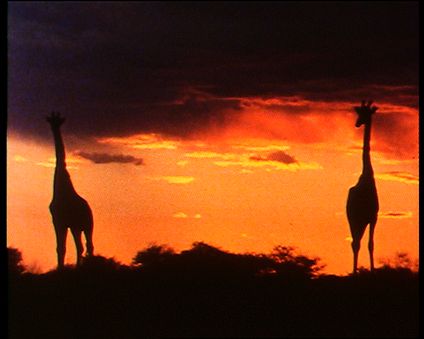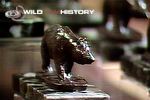Etosha: The Place of Dry Water
(1980)

The first ever Golden Panda award winner at Wildscreen 1982, Etosha: The Place of Dry Water provides an intimate and evocative portrayal of the wildlife in Namibia's Etosha National Park - epic in its beauty but punishing to the extreme during the long, hot dry season.
This parched landscape is dominated by a vast, dusty salt pan that creates a shimmering sheet of mirages on which herds of animals, veiled behind hazy heat waves, seem to float on air. For a short time only, during the heavy rains, will this pan fill with water, becoming a hub of activity and flourishing with life. Wildlife filmmaker David Hughes and his wife, Carol, spent 18 months in the National Park filming the cycle of life and death, from the start of the rainy season to the end of the long dry season that follows, capturing the harsh struggle to survive in one of the world's most hostile landscapes.
Their journey explores many of the mammals, birds and reptiles that can be found within the Park's boundaries, recording behaviour never before captured on film, including: the birth of a wildebeest, a zebra being killed by lions, and the cannibalistic tendencies of bullfrogs.
This award-winning National Geographic Television production is acclaimed for its focus on imagery and minimal use of commentary - providing essential information, while leaving the viewer free to observe the majesty and mystique of raw nature, in one of Africa's most important game reserves.





